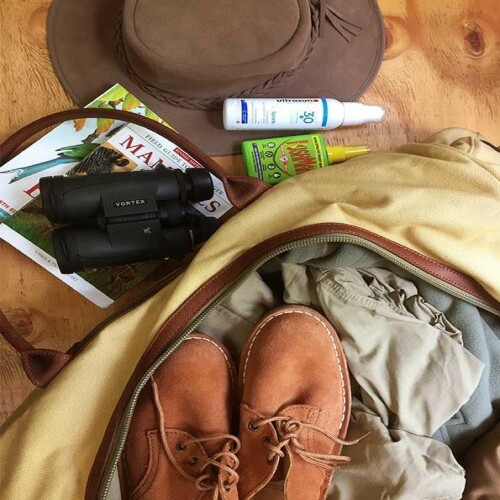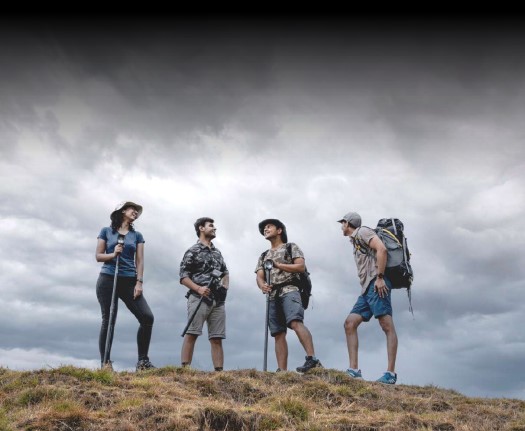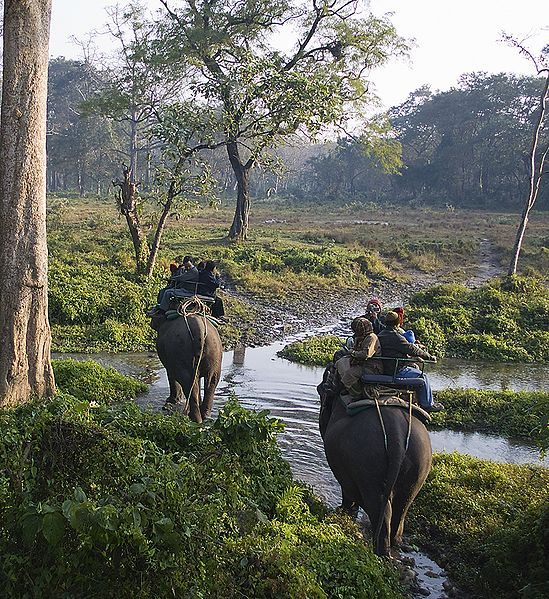
Ultimate Guide for an Indian Jungle Safari
Welcome to the Ultimate Guide to a Jungle Safari! Explore the untamed beauty of nature and embark on a thrilling expedition, encountering diverse wildlife and stunning landscapes. In this comprehensive blog, we’ll provide you with essential tips, expert insights, and practical information to make your Jungle Safari an unforgettable journey.
Get ready to unleash your inner explorer !!
Ultimate Guide for Jungle Safari
“In nature, nothing is perfect, and everything is perfect. Trees can be contorted, bent in weird ways, and they’re still beautiful.” – Alice Walker
1. Variety of Jungle Safaris in India

India offers a wide range of Jungle Safaris that showcase its diverse wildlife. From the dense jungles of national parks like Jim Corbett and Bandipur to the captivating landscapes of Ranthambore and Kaziranga, there are plenty of options to explore. During these safaris, you can encounter magnificent tigers, elephants, deer, and a variety of beautiful bird species.
Discover the variety of Jungle Safaris in India, each offering a unique experience in different regions:
- Jeep Safaris: Traverse the wilderness in a sturdy 4×4 vehicle, covering larger areas and encountering a diverse range of wildlife. Explore national parks like Jim Corbett and Bandipur from the comfort and excitement of a jeep. The advantage of a jeep safari lies in its ability to navigate rugged terrains, allowing you to access remote areas and spot elusive wildlife that may be difficult to reach on foot. With the open-air design and elevated vantage point, you’ll have enhanced visibility and the opportunity to capture stunning photographs of majestic animals in their natural habitats.
- Elephant Safaris: Embark on an extraordinary adventure by riding on the majestic back of an elephant. Journey through dense jungles, where vehicles cannot reach easily, and get up close to wildlife in places like Kaziranga and Periyar. The advantage of an elephant safari lies in the gentle and silent approach, allowing you to observe wildlife from a unique perspective without disturbing their natural behavior. The slow pace and elevated position provide excellent visibility, allowing you to spot elusive animals and appreciate the intricate details of the surrounding flora and fauna.
- Boat Safaris: Experience the wonders of wildlife from a different perspective on boat safaris. Glide along tranquil rivers and lakes, spotting crocodiles, water birds, and other aquatic species in places like Sundarbans and Chilika Lake. The advantages of a boat safari are twofold. Firstly, it allows you to access areas that are otherwise inaccessible on foot or by vehicle, providing unique opportunities to encounter water-dwelling creatures and explore their habitats. Secondly, the calm and silent movement of the boat ensures minimal disturbance to the wildlife, allowing for closer observations and capturing breathtaking moments. Other notable destinations for boat safaris in India include the backwaters of Kerala, the Brahmaputra River in Assam, and the Ganges River in Varanasi.
- Walking Safaris: Immerse yourself in nature with walking safaris in select national parks and reserves. Accompanied by knowledgeable guides, explore the wilderness on foot, observing flora, fauna, and smaller wildlife in their natural habitat. Walking safaris offer a more intimate and immersive experience, allowing you to connect with nature at a deeper level. Unlike other safari modes, walking safaris provide an opportunity to learn about the intricate details of the ecosystem, identify animal tracks, and appreciate the finer aspects of the natural world. Some popular destinations for walking safaris in India include Satpura National Park in Madhya Pradesh, Binsar Wildlife Sanctuary in Uttarakhand, and Hemis National Park in Ladakh. Embark on a walking safari and discover the hidden treasures of the wild while enjoying the thrill of exploring on foot.
2. When to Go for Safari
The best time to go for a safari depends on various factors, including the season and time of the day. Here’s some useful information to help you plan your safari adventure:

so no matter when you go, be prepared for an incredible journey into the heart of nature’s wonders.
- Season: The ideal season for a safari can vary based on the region you plan to visit in India. In general, the dry seasons are considered optimal for wildlife sightings as animals tend to gather near water sources. In popular safari destinations like Ranthambore and Bandhavgarh, the peak season usually falls between October and June excluding the monsoon months when national parks are closed for visitor safety. During this period, the weather is relatively dry, and wildlife is more active, providing better opportunities for spotting various species in their natural habitats.
- Time of the Day: Early morning and late afternoon are considered the best times for safaris. During these periods, known as the “golden hours,” wildlife is most active, and you have a higher chance of spotting animals in action. The cooler temperatures in the early morning also make it more comfortable for both you and the animals. Additionally, the soft light during sunrise and sunset creates a beautiful ambiance for photography.
It’s important to note that wildlife sightings are always subject to nature’s unpredictability. Factors like weather conditions, animal behaviour, and individual park regulations can affect your safari experience. Therefore, it’s recommended to check with local guides or tour operators for specific details and current information regarding the best time to go for a safari in your chosen destination.
3. Safari Essentials
When preparing for a safari adventure, it’s essential to pack the right essentials to ensure a comfortable and safe experience. Here are some must-haves:

you’ll be well-prepared for an unforgettable wildlife experience
while ensuring your comfort and safety.
Clothing:
- Opt for lightweight, breathable clothing that covers your body to protect against sunburn, insects, and vegetation.
- Neutral colours like khaki, beige, or olive help you blend into the surroundings and avoid attracting attention from wildlife.
- Pack a hat, sunglasses, and a lightweight rain jacket for varying weather conditions.
Footwear:
- Choose sturdy and comfortable closed-toe shoes or boots for walking safaris to protect your feet from thorns, rocks, and insects.
- Ensure your footwear provides good traction for uneven terrains and slippery surfaces.
Sun Protection:
- Safaris often involve prolonged exposure to the sun. Apply a high-SPF sunscreen to protect your skin from harmful UV rays.
- Wear a wide-brimmed hat to shield your face, neck, and ears from direct sunlight.
- Don’t forget to wear UV-protective sunglasses to safeguard your eyes.
Insect Repellent:
- Use a reputable insect repellent to keep mosquitoes, ticks, and other insects at bay.
- Look for products containing DEET or other recommended ingredients for effective protection.
- Apply the repellent to exposed skin and clothing, following the instructions on the label.
Binoculars and Camera:
- Bring a pair of binoculars to enhance your wildlife viewing experience by getting a closer look at animals and their behaviour.
- Pack a camera with a zoom lens to capture stunning photos of wildlife and picturesque landscapes.
- Don’t forget extra memory cards and batteries to avoid missing out on memorable shots.
4. Ensure Your Safety
When you embark on a jungle safari, your heart races with excitement and anticipation. The untamed wilderness calls to you, urging you to explore its hidden wonders. But in this wild realm, uncertainties linger, and safety becomes paramount. That’s why the Smart Stick Guardian

becomes your unwavering ally, instilling a sense of courage and protection within you. It becomes your trusted companion, empowering you to face the unknown with unwavering confidence. With its safety features like electroshock and a panic alarm, fear takes a backseat as you embark on a journey that stirs your soul and awakens your spirit.
5. Safari Étiquettes
When going on a safari adventure, it’s essential to be aware of certain things that should be avoided to ensure the safety of both wildlife and visitors. Here are some important points to remember:
- Do not feed or touch the animals: It’s crucial to maintain a safe distance from wildlife and refrain from feeding or attempting to touch them. This helps preserve their natural behaviours and avoids potential harm to both humans and animals.
- Do not litter: Keep the safari environment clean by disposing of waste properly. Always carry a bag to collect any trash and bring it back with you. Littering can disturb the ecosystem and negatively impact the habitat of animals.
- Do not make excessive noise: Maintaining a quiet and peaceful atmosphere is important during a safari. Loud noises can startle animals and disrupt their natural behaviour. Keep conversations and electronic devices on silent or at a low volume to respect the wildlife and fellow safari-goers.
- Do not venture off designated paths: Stick to the designated paths and trails provided by the safari guides. Venturing off into unauthorized areas can be dangerous and may disturb the animals’ habitat. Follow the instructions of your guide to ensure a safe and enjoyable experience.
- Do not harass or provoke the animals: It is crucial to observe animals from a distance and avoid any actions that may harass or provoke them. This includes making sudden movements, loud noises, or using flash photography that can startle or irritate the animals.
- Do not smoke or use fire: Many safari areas have dry vegetation, making them highly susceptible to fires. In addition to the risk of harming wildlife, vegetation, and fellow visitors, smoking or using fire during a safari can also lead to the outbreak of jungle fires. These fires can spread rapidly and cause extensive damage to the ecosystem, endangering both plant and animal life. It is of utmost importance to strictly adhere to the no-smoking policy and avoid any activities that involve fire to prevent such incidents and preserve the natural beauty of the safari environment.
By adhering to these guidelines, you can have a responsible and enjoyable safari adventure while respecting the wildlife and their natural environment. Remember, the primary goal is to observe and appreciate these magnificent creatures in their natural habitat without causing any harm or disturbance.
Conclusion
In conclusion, India offers diverse jungle safaris, including jeep, elephant, boat, and walking safaris, each providing unique opportunities to witness wildlife in its natural habitat. The best time to go is during the hotter months from October to June, with early mornings and late afternoons being optimal for sightings. Remember to pack essentials, prioritize safety by equipping yourself with the Smart Stick Guardian, follow guidelines, and respect wildlife and their habitat. Avoid littering, smoking, flash photography, getting too close to animals, or engaging in disruptive behaviour. Embrace the awe-inspiring beauty of Indian safaris while ensuring a harmonious coexistence with nature.
Related Articles
Check out Kyari for more such adventure-related tips.
Shop Smart Stick
Shop your Smart Stick here !!
